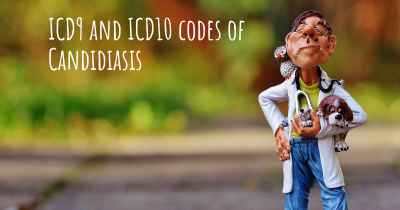Living with Candidiasis. How to live with Candidiasis?
Can you be happy living with Candidiasis? What do you have to do to be happy with Candidiasis? Living with Candidiasis can be difficult, but you have to fight to try to be happy. Have a look at things that other people have done to be happy with Candidiasis

Living with Candidiasis
Candidiasis, also known as a yeast infection, is a common condition caused by an overgrowth of the Candida fungus. It can affect various parts of the body, including the mouth, throat, genitals, and skin. Living with candidiasis can be challenging, but with proper management and lifestyle changes, it is possible to minimize symptoms and improve your quality of life.
1. Seek Medical Advice
If you suspect you have candidiasis, it is crucial to consult a healthcare professional for an accurate diagnosis and appropriate treatment plan. They will be able to determine the severity of your condition and recommend the most suitable treatment options.
2. Follow Prescribed Treatment
Once diagnosed, it is important to follow the treatment plan prescribed by your healthcare provider. This may include antifungal medications, topical creams, or oral tablets. It is essential to complete the full course of treatment, even if symptoms improve, to ensure the infection is fully eradicated.
3. Maintain Good Hygiene
Practicing good hygiene is crucial when living with candidiasis. Keep the affected areas clean and dry, especially in warm and moist areas where the fungus thrives. Use mild, fragrance-free soaps and avoid harsh chemicals that may irritate the skin. Additionally, regularly wash and change clothes, towels, and bed linens to prevent reinfection.
4. Wear Breathable Clothing
Choosing loose-fitting, breathable clothing made from natural fibers such as cotton can help prevent excessive sweating and provide better air circulation, reducing the risk of candida overgrowth. Avoid tight-fitting clothes and synthetic materials that trap moisture and heat, creating an ideal environment for the fungus to grow.
5. Maintain a Healthy Diet
Avoiding foods that promote yeast growth can be beneficial in managing candidiasis. Limit your intake of sugary foods, refined carbohydrates, and alcohol, as they can contribute to yeast overgrowth. Instead, focus on a well-balanced diet rich in whole grains, lean proteins, fresh fruits, and vegetables. Probiotic-rich foods, such as yogurt and fermented vegetables, may also help restore the natural balance of bacteria in your body.
6. Manage Stress Levels
Stress can weaken the immune system, making it harder for your body to fight off infections. Finding healthy ways to manage stress, such as practicing relaxation techniques, engaging in regular exercise, and getting enough sleep, can help support your immune system and reduce the risk of candida overgrowth.
7. Avoid Irritants
Some products and substances can irritate the affected areas and worsen candidiasis symptoms. Avoid using scented hygiene products, douches, and harsh chemicals that may disrupt the natural balance of bacteria and fungi. If you have a vaginal yeast infection, it is advisable to avoid sexual intercourse until the infection clears up to prevent further irritation.
8. Stay Informed
Stay informed about candidiasis and its management by seeking reliable sources of information. Educate yourself about the condition, its symptoms, and treatment options. This knowledge will empower you to make informed decisions about your health and effectively communicate with your healthcare provider.
9. Support Network
Living with candidiasis can be emotionally challenging. It can be helpful to connect with others who are experiencing similar struggles. Joining support groups or online communities can provide a platform to share experiences, seek advice, and find emotional support from individuals who understand what you are going through.
Remember, everyone's experience with candidiasis is unique, and what works for one person may not work for another. It is essential to work closely with your healthcare provider to develop a personalized management plan that suits your specific needs. With proper care and lifestyle adjustments, it is possible to live a fulfilling life while managing candidiasis.








